My wife and I recently took a two-week trip to Xinjiang, China and a one-week trip to Taiwan. We were able to squeeze between these two trips a two-day visit to the Shanghai World Expo. Since there is so much interest in the Shanghai World Expo and many people are planning to visit it later this year, I thought it would be useful to provide some reflections on our visit. Since many people have visited the Shanghai World Expo and were not able to obtain a ticket to see the China Pavilion, I describe in an appendix a strategy that we learned from a friend that can maximize the chances of obtaining a ticket to the China Pavilion.
Background on World’s Fairs
First we provide some background on World’s Fairs and the Shanghai World Expo. How often do we have World’s Fairs? The answer is actually not so simple and varies with time. There are many so called World’s Fairs and International Expositions. Some are larger and general in scope, and some are smaller and narrower in scope, e.g., an international exposition on horticulture. Some are recognized by the International Exhibitions Bureau (BIE), which is the official international sanctioning body established since the signing of the 1928 Convention on International Exhibitions, and some are not. The recognized general World’s Fairs usually have a duration of six months, while others may be shorter, from several weeks to three, four months. Since 1995, the interval between two consecutive recognized general World’s Fairs should be at least five years, although before 1995 this interval varied and was shorter.
Overview of the Shanghai 2010 World Expo
The Shanghai 2010 World Expo is recognized by the BIE as a general World’s Fair, and is the largest World’s Fair ever. It occupies a site of 5.28 square kilometers straddling both the Pudong and Puxi parts of Shanghai, with more than 170 pavilions from almost 200 countries and more than 50 international organizations. It is opened from May 1, 2010 to October 31, 2010, with a projected attendance of over 70 million people, or an average of at least 380,000 people per day over 184 days. The theme of the Shanghai World Expo is “Better City, Better Life.” So most of the pavilions focus on what have been done in improving the livelihood of urban living, including about the modern technologies and the efforts they have put in to improve the environment.
The Expo site is divided into five zones: A, B, C, D, and E, with eight entrances, and each entrance within walking distance of one or more subway stations. Each zone represents a part of the world. Zone A contains most of the Asian and Middle East pavilions, including the China and its Provincial Pavilions. Zone B contains several southeast Asian and Australia and New Zealand Pavilions. Zone C contains most of the Africa, Europe, and America Pavilions. The area between Zone A and Zone B contains several central Expo pavilions such as the Expo Center, Expo Culture Center (also called the Expo Performance Center), Theme Pavilion (there are actually five theme pavilions each with its individual name, and three of the five are contained in the Theme Pavilion), and Expo Axis. Zones D and E contain several other China and other countries’ corporate pavilions, and the two other Theme Pavilions (Footprint Pavilion in Zone D and Pavilion of the Future in Zone E).
Most of the structures are only temporary for the Shanghai World Expo, and will be torn down after the Expo ends. Only five structures are permanent. They are the Expo Center, Theme Pavilion, Expo Culture Center (also called Expo Performance Center), China Pavilion, and Expo Axis. The Expo theme “Better City, Better Life” is well illustrated by the architectures and functions found in the Expo Axis. For example, it contains six enormous funnel-shaped shells made of steel and glass, called sun valleys, that direct natural light and air into the structure and collect rainwater for irrigation and sanitation, thus saving 50,000 cubic meters of water consumption. The roof of the Theme Pavilion is the world’s largest single piece of solar roof extending more than 30,000 square meters, and saves enough energy to fuel the equivalent of 4,000-5,000 households running average household electrical appliances.
By clicking on each thumbnail photo, you can get a larger-size photo.
Our Visit
We spent only two days (Saturday and Sunday, May 15-16, 2010) at the Shanghai World Expo. Our assessment is based only on that two-day experience. Please also keep in mind that one’s likes and dislikes could be highly personal; so our assessment may not be the same as others. The Shanghai World Expo opens from 9:00 AM to 10:30 PM, although when people finish with the last show, it could be 30 or more minutes past 10:30 PM. On our first day, we spent “16.5 hours” at the World Expo, but saw only four pavilions (in the sequence of China, Taiwan, Pavilion of the Future, and Saudi Arabia). On our second day, we spent about 14 hours at the World Expo, and saw nine pavilions [in the sequence of Japan, Oman, Israel, U.S.A., Turkey, Canada, French, Russia, and Oil (also known as China Petroleum)]. So during our two-day visit, we saw a total of only 13 pavilions out of a total of about 170 pavilions. To keep the article from being very long, I will describe our views of only seven pavilions: China, Taiwan, Saudi Arabia, Japan, Israel, U.S.A., and the Oil Pavilion.
For most of the pavilions you just wait in line to get inside, and you will be admitted as long as you reach the front of the line before the pavilion closes at or a few minutes before 10:30 PM (actually they will close off the line when the line gets too long, so you don’t wait several hours in line and then can’t get inside the pavilion because it has reached closing time). However, for two of the pavilions, China Pavilion and Taiwan Pavilion, you have to wait in line to get a pre-scheduled ticket, and then at your designated time-slot of one hour, you can go visit the pavilion, but may still require waiting in line again to get in.
Since we are of Chinese origin, we wanted to visit the China Pavilion and the Taiwan Pavilion. Since we are Americans, we also wanted to visit the U.S.A. Pavilion.
China Pavilion
Even though the Expo doesn’t open until 9:00 AM, we went to Entrance #2 at 6:30 AM to start waiting in line to make sure that we can get a pre-scheduled ticket to the China Pavilion, whose daily allotment of about 30,000 individual tickets [1] usually are already completely distributed by 9:05 AM (for more details, see the Appendix). Our pre-scheduled ticket to the China Pavilion was for 12:30-1:30 PM. We went there slightly before 12:30 PM, and we still had to wait in a long line for approximately another hour before we were able to enter the China Pavilion.
The China Pavilion had three major segments. The first segment is a video presentation about the many modern (especially urban) developments in China since the country opened up a little more than 30 years ago. The second segment is an impressive extremely large (longer than a football field) dynamic reproduction of the famous Chinese painting “Riverside Scene at Qingming Festival.” What is unique about this reproduction is that the figures in the painting are dynamic with movements. The third segment is an exhibit of several environmentally friendly urban experiments, as well as 100 children’s paintings of their vision of the future. Even though the dynamic Qingming Festival painting was very good and unique, the pavilion was not worth the 3.5 hours of waiting in line and didn’t seem to meet the huge expectation that we had arising from all the hype that we had heard. As a matter of fact, when we were waiting in line at 6:30 AM, a middle-age Chinese tour guide also waiting in line with his clients half-jokingly said “If you visited Shanghai’s World Expo and you didn’t go to see the China Pavilion, you will regret for the rest of your life. However, if you visited Shanghai’s World Expo and you did go to see the China Pavilion, then for the rest of your life you will regret.” It might have been said in jest, but there is a lot of truth to that statement.
Taiwan Pavilion
Immediately after we obtained the China Pavilion tickets, we went directly to the line for the Taiwan Pavilion, which gives out only 3,000 tickets during the daytime, although they give out another set of tickets in the evening. So if you don’t go there early in the morning, you will not get any ticket unless you go wait in line again in the evening. After waiting in line for about 1.5 hours, we got a pre-scheduled ticket for the Taiwan Pavilion for 2:30-3:30 PM. When we went to the Taiwan Pavilion shortly before 2:30 PM, there was basically no additional wait.
We thought the Taiwan Pavilion was very good, even though to some people the Pavilion externally has some resemblance to a toilet bowl. There were also three segments to the Taiwan Pavilion. The first segment is a 4D/720 degree video presentation showing the scenic beauty of Taiwan. [2] The 4D/720 degree video presentation is a relatively new technology that is utilized in several pavilions at the World Expo. 4D means that besides the video being three dimensional, the audience can also experience using other senses besides vision, e.g., nose smelling the fragrance of flowers, skin feeling the morning mist, body feeling an earthquake. 720 degrees means that the screen wraps around you both horizontally and vertically. The second segment is a lantern wish with each visitor’s wish displayed in an electronic lantern rising to the sky. The third segment is an informal short Chinese music performance followed by Chinese tea tasting. After the tea tasting, the visitor is allowed to keep the porcelain tea cup as a souvenir. Perhaps because there was not that much hype about the Taiwan Pavilion and our expectation was lower, we were impressed with the Taiwan Pavilion. We like its organization and structure. We liked the informal relaxed atmosphere, felt welcome during the whole visit, enjoyed all three segments, and found that it was very well organized. Furthermore, it was one of only two pavilions we visited that gave us a souvenir [3].
Saudi Arabia Pavilion
The Saudi Arabia Pavilion is one of the most talked about pavilions at the Shanghai World Expo. It is also the pavilion with probably the longest waiting time in line. On our first day we went there at 6:15 PM, which was around dinner time when the lines are usually shorter. However, when we got there, there was a very long line, and were told that the waiting time is about 3 hours. Having heard so much hype, we decided to wait in line even though we were already very tired having already spent almost 12 hours at the Expo. It turned out that the actual waiting time was four hours, probably partially due to people cutting in line, and the security personnel managing the line were kind of lax.
The Saudi Arabia Pavilion is a large and impressive building, resembling the Guggenheim Museum in New York City, with its spiral walkway where visitors see the 4D/720 degree presentation. It is advertised as the world’s largest 4D/720 degree video show that lasted about 20 minutes, with another approximately 5-10 minutes of slide show while walking down the spiral walkway at the end of the formal presentation . The 4D/720 degree presentation, about the transformation of Saudi Arabia from a backward country to a rich and modern country, was very good, but it (or anything else at this Expo) was not worth a four-hour wait. I think two factors contribute to the longest waiting line at the Expo. The flow-through rate is slow. It allows approximately 200 people per show (I think they could have put more people in per show), which is five times smaller than the 1,000-seat auditorium at the U.S.A. Pavilion [4]. This means that if everything else is equal, the line would be five times longer than the line at the U.S.A. Pavilion. Since the overwhelming majority of visitors are Chinese from the host country and most of them probably have never seen a 4D/720 degree show, the reception was very good and words spread.
It was around 10:15 PM when we reached inside for the presentation, and it was about 10:45 PM when we left the Saudi Arabia Pavilion, and about midnight by the time we got back to our hotel. We were totally exhausted.
Japan Pavilion
Having slept only about 3-4 hours for each of the previous several days, on our second day, we left our hotel at around 8:00 AM and got to the Expo grounds a little after 9:00 AM. Since this was our last day at the Expo, we didn’t want to spend most of the time waiting in lines. We decided that we would wait in a long line for only one pavilion and spend the rest of the time catching the shorter-line pavilions. The long-line pavilion that we chose was the Japan Pavilion, which was the pavilion we went to immediately after entering. The wait was announced to be three hours, and we decided to wait for it since we also heard a lot of good things about the Japan Pavilion,. Fortunately, the wait turned out to be only two hours, instead of the announced three hours (apparently someone miscalculated).
The Japan Pavilion had two segments. The first segment was a slide/video presentation about a collaboration between an elder Japanese male researcher and a young Chinese female researcher to reverse the trend of a rare bird from becoming extinct, with only about two dozen such birds remaining. The elder Japanese researcher proposed a novel method of breeding, and the younger Chinese researcher successfully implemented the method, resulting in a very successful collaboration. By showing a friendly and successful collaboration between the two countries on an important endeavor, it was a very clever, politically oriented program to soften the antagonism of the Chinese people toward Japan due to the horrible inhumane atrocities that Japan committed in China during the 14-year Sino-Japanese war of 1931-1945, and for which Japan still has not acknowledged of its existence or officially apologized.
The second segment was a more informal cartoon-like slide/video presentation that really was based on the same story line, but providing more detailed and a more human touch by describing the life history of these two researchers. It was emceed by two very polished young presenters. It also showed some new interactive technology by including in real-time on a photo-collage display on the big screen a photo of the audience person interacting with the emcees. This interactive technology was also well received by the audience. It also showed a robot playing on a violin beautiful Mozart music of very high quality.
The auditorium capacity of each segment was about 500 (two and a half times larger than that of the Saudi Arabia Pavilion), but the total time spent in the Japan Pavilion was about one hour, which was about twice as long as that for the Saudi Arabia Pavilion. That was why the waiting line at the Japan Pavilion was also so long, but slightly shorter than the waiting line for the Saudi Arabia Pavilion if the number of people attending is the same.
Israel Pavilion
The wait for the Israel Pavilion was only about 30 minutes. The program contained a video presentation about the contributions of the world’s Jewish people. It started with Einstein’s E=MC2 discovery, and followed with other Jewish people’s major contributions to science and technology. There was also some online interaction with the audience.
It was a good presentation. But what stood out and stuck in my mind about the Israel Pavilion (and actually a couple other pavilions) was that the presentation was in Chinese only. If I did not understand Chinese, I would have felt left out and unwelcome. I think this was a major mistake by the Chinese Expo organizers of not requiring any participating exhibitor presentation to include at least another commonly used language, such as English, on a subtitle-basis. This was the approach adopted by the Japan Pavilion, whose presentations were in Japanese and Chinese, but with English subtitle. I think this was one of the reasons why 99+ percent of the visitors have been Chinese . Even taking into account that some of these are citizens of other countries who originated from China, I don’t think the attendance will meet the Chinese projection that 8% of the visitors would be foreigners.
U.S.A. Pavilion
Even though almost all the assessments of the U.S.A. Pavilion that we had read were negative, being Americans, we wanted to visit the U.S.A. Pavilion. In spite of the bad press, there were quite a few people visiting the U.S.A. Pavilion. The U.S.A. Pavilion is one of the largest pavilions at the Expo. As previously explained about the large flow-through capacity of the U.S.A. Pavilion due to its 1,000-seat [4] auditorium and the formal presentation was only about 30 minutes, the wait in line was only 30 minutes, which we considered to be short after waiting for 2-4 hours at other pavilions.
Our assessment of the U.S.A. Pavilion is different from most other assessments that we had read. The U.S.A. Pavilion had two major segments: A presentation hall, and a self-tour of the exhibitor hall. I think we need to separate the assessment to an assessment of each segment. The presentation hall segment consisted of three parts. The first part took place in a large standing waiting room which showed video clips of average Americans trying to learn Chinese and welcoming the visitors to their pavilion. The second part took place in the 1,000-seat auditorium [4] which started with a welcome from Secretary of State Hilary Clinton and at the end by President O’Bama, and in-between there were video presentations of several elementary school children talking about their dreams and their visions of the future, and how a young girl through her determined efforts to beautify a small plot of land inside a tenement. Initially her efforts were ignored and looked down upon by her neighbors, but with tenacity she eventually won the admiration and participation of her neighbors, and their combined efforts transformed that small, empty plot of land into a beautiful garden that all the residents were proud of. The presentation hall segment also contained several exhibits of green technologies being applied to improving urban living. I thought that the presentation hall segment of the U.S.A. Pavilion was good. The initial lead-in of Americans trying to learn Chinese to welcome the visitors immediately put the visitors in a relaxed and light mood and gave the impression that Americans are friendly and approachable. The second part showed that the dedication and commitment of one person can result in significant changes to the community and society around you, which is a theme often stressed in America about the power of one. However, I thought that the emcees, who are mostly Chinese American college students studying in China, were not as polished and professional as the emcees in the Japan Pavilion.
The exhibitor hall segment was a disappointment. The American government did not commit enough money to put on an exhibitor hall. So it relied on corporate sponsors to fund the exhibitor hall, with the result that it basically consists of a collection of single wall ads for each sponsor. So it was not very meaningful. I think it is the exhibitor hall segment that led to all the negative assessments of the U.S.A. Pavilion.
One possible exception was the exhibit “The Chinese in America – We Are Family” which was a project sponsored by the Committee of 100. This is an exhibit showing off the pride of the Chinese in America with a collage of photos of famous and ordinary Chinese Americans. The Committee of 100 also sponsors the “Chinese American Heroes” organization that identifies Chinese Americans who have made major contributions to the society at large, and honors them by putting them on a wall of Chinese American Heroes. The Chairman & Founder of the “Chinese American Heroes” organization is Roger S. Dong, and the President & CEO is David Chai, an old friend and former mayor of Holmdel, NJ.
The Oil Pavilion
The last pavilion that I want to discuss is the Oil Pavilion, built by the China National Petroleum Corporation, China Petrochemical Corporation, and China National Offshore Oil Corporation. The same local Chinese travel agent whom I quoted about the China Pavilion recommended this pavilion. He said that the line is short, and its 4D/720 degree video show is almost as good as that of the Saudi Arabia Pavilion. So on our second and last day at around 10 PM just before we left the Expo, we went to see the Oil Pavilion. We waited in line for only about 20 minutes, and saw a very good 4D/720 degree video presentation about the past, present and future of oil exploration, displaying respectively the evolution of petroleum during millions of years, vital roles of petroleum for human history and city development, and prosperous visions for the development of petroleum. The tour guide was right in recommendation this pavilion. If I have to make a choice between a 20-minute wait to see the Oil Pavilion presentation or a four-hour wait to see the Saudi Arabia presentation, I would definitely recommend the former.
Some Suggestions on Visiting the World Expo
I like to offer the following suggestions for anyone who is planning to visit the World Expo:
- Go on weekdays to minimize the huge crowds. There will still be hundreds of thousands of visitors, but not as many as on weekends.
- Plan to spend four-to-five days there, because two days just do not provide sufficient time.
- See if you can arrange the tour with a travel agency who can get you tickets to the pavilions that you definitely want to visit, especially if you want to visit the China Pavilion and the Taiwan Pavilion where you need to get pre-scheduled tickets. This doesn’t necessarily mean that you don’t have to wait in line, it just means that your wait would be much shorter. Recall that after getting our pre-scheduled ticket to the China Pavilion, we still had to wait for more than an hour to get in. Keep in mind, however, that not every travel agency may be able to arrange such pre-scheduled tickets.
- Select a few must see pavilions with expected long lines. On each day go to one of these the first thing in the morning. Then spend the rest of the day visiting other pavilions with shorter lines. However, you should still go early in the morning, e.g., 8:00 AM or earlier, to wait in line to get inside the World Expo even though the Expo doesn’t open until 9:00 AM. By spending an hour waiting for the World Expo to open may result, e.g., in a one-hour waiting-line for the Saudi Arabia Pavilion, instead of the three-to-four hour waiting-line, resulting in a net saving of one-to-two hours. Buy your Expo entrance tickets before the day of visit, because the ticket offices don’t open until 8:00 AM.
- Sometimes the lines may be shorter around dinner times; so have an early or late dinner. But this might not always be the case, because recall that we went to the Saudi Arabia Pavilion at 6:15 PM and had to wait for four hours.
- The China Pavilion is one of the few permanent structures. If you will visit China again in the future, then you can wait until that time to visit the China Pavilion. I am sure that the lines at that time will be shorter. However, if you must visit the China Pavilion now and you are not doing it through a travel agency, then please read the Appendix which provides a detailed strategy on how to maximize your chances of getting a pre-scheduled ticket.
- If you are 70 or above, certain pavilions, including the entrance to the World Expo, may have special lines for senior citizens. So always keep an eye out or inquire whether there are special lines for senior citizens (or handicapped people). Such people can be accompanied by one other person, but often they may allow several people accompanying one such person.
- Check to see if you are qualified to purchase discounted “Special Admission” tickets , e.g., “Standard Day Single Day Admission” is 160 Yuans (about $23.50), but “Standard Day Special Admission” is only 100 Yuans (about $14.70). People who are qualified for Special Admission include people born on or before December 31, 1950 with valid IDs, students with valid IDs, children less than 1.2 meters tall, and people who are disabled.
- For some pavilions, there might be reservation machines near the pavilion entrances where visitors can reserve a ticket for future admission. During our two-day visit, we didn’t see any such machines, but we were also not aware of their possible existence and didn’t inquire about them.
- Do some pre-trip planning to become familiar with the World Expo, including classifying the pavilions into three categories: (1) you must see, (2) you want to see if the waiting is less than one hour, and (3) nice to see. There are quite a few online resources to learn about the Shanghai World Expo. Here are two key sites:
- http://en.expo2010.cn/ – this is the official website of the Shanghai World Expo where you can find large amounts of information including maps, ticket prices, pavilion locations and descriptions, special events, and latest news. An example is the 5/14/10 Latest News that contained the following item: “The China Pavilion will soon have a new ‘national treasure exhibit’ to replace the current ‘Along the River During the Qingming Festival’ that will return to Liaoning Museum. … The new exhibit is possibly the ‘Bronze Chariot and Horse’ sculpture, the precious centerpiece of the terra cotta warriors from the Qin Dynasty (221-206 BC).”
- http://en.expo.cn/indexn.html?id=11100001 – this can provide a virtual tour of the World Expo. It can provide a lot of information, but it may be a difficult and slow website to navigate.
Finally, is it worth it to visit the Shanghai World Expo? My answer is that if you make a special trip from the U.S. to China just to visit the Shanghai World Expo, then it is not worth it. However, if you are going to be in Shanghai (or China) or if you are combining that with visiting other parts of China, then yes, it is worth it.
A couple more remarks. there are several thousand daily volunteers at the World Expo. They are mostly college students from Shanghai, and during our visit, they all wore a green jacket (during the hot summer days, they may be wearing something else, and not a green jacket). We utilized their help numerous times to find out the directions to various locations, where to take the shuttle buses or ferry inside the Expo grounds, the closest rest rooms or restaurants, etc.
We definitely wish that we had more time to see many of the other pavilions. We could have easily used another two-to-three additional days. But that was all we can fit into our schedule.
Appendix: How to Maximize Your Chances of Getting a Ticket to the China Pavilion
The following is a condensed version of the strategy that Kai Eng (an old friend from NJ who has been living in Shanghai during the last few years) sent to us just before we left for Shanghai. We followed it and were able to get the pre-scheduled tickets for the China Pavilion. Otherwise, it was unlikely that we would have been able to do that. We have friends who went to the World Expo on each of several days at around 8:15 AM to wait for the Expo to open at 9:00 AM, but still weren’t able to get the tickets.
The key to keep in mind is that the China Pavilion has roughly about 20,000 to 30,000 tickets to distribute to individuals every day. These tickets are distributed by security guards immediately after visitors have gone through security checks [5], shown their Expo tickets, and requested tickets to the China Pavilion. There are approximately 300 such security guards. So on the average, each one has about 65 to 100 tickets to distribute. To take into account factors such as (1) they may keep some of these tickets for VIPs and other special guests, (2) perhaps security guards at certain entrances may get less tickets than the average, and (3) the time to go through a security check may vary from line to line, you should be waiting at an entrance line just before the security check with no more than 30-40 people ahead of you. There are pros and cons for each entrance, depending on how close it is to a subway station, how close it is to the China Pavilion, how close it is to the Taiwan Pavilion, the size of the crowd expected, the ease or difficulty in determining the size of each waiting line, etc.
The process is actually a little more complicated. For each of the eight entrances, there are two types of entrances. There is an inside entrance just before the security check; this inside entrance opens at 9:00 AM. There is also an outside entrance to enter the Expo grounds so that you can go wait in line at one of the inside entrances; the outside entrance opens roughly around 8:00 AM, but can vary.
Since different numbers of people use different entrances. The time that you need to be there at the external entrance in order to be the first 30-40 people waiting in line at an internal entrance may be different. Kai suggested to try one of the following five external entrances, with the suggested time to be there in parentheses: Entrance #2 (7:30 AM), Entrance # 4 (7:30 AM), Entrance #5 (7:15-7:30 AM), Entrance #6 (7:00 AM), and Entrance #8 (7:45-8:00 AM). To provide a little more safety factor and keeping in mind that attendance is larger near the latter part of the six-months, I suggest that you go there at least another 30 minutes earlier.
When you are waiting in line especially at the external entrance, stay close to the people in front of you; otherwise people behind you may rush ahead of you. As soon as you enter the external entrance, run or walk very fast to one of the lines at the internal entrance; otherwise, a lot of people who were behind you would go ahead of you, as this distance could be more than several hundred feet long. Also, usually the lines at the farthest left or right are shorter than the lines in the middle. When we did this at Entrance #2, because my brother-in-law is over 70, we went to the senior citizen line which was the farthest line on the left at the inside entrance of Entrance #2. It is important to remember that it is your position in one the lines at an internal entrance that is the deciding factor. Usually the day’s allotment of individual tickets would be completely distributed by 9:05 AM.
After you enter and obtain your ticket for the China Pavilion, immediately walk fast to the Taiwan Pavilion and wait in line there for the pre-scheduled tickets. The distance from the entrance to the Taiwan Pavilion depends on the Expo entrance, and some are closer than others, and the distance could be substantial. So be sure that you study the maps ahead of time and know your way around. In our case, after we obtained our China Pavilion tickets shortly after 9:00 AM, we took a fairly long walk from Entrance #2 to the Taiwan Pavilion. Although there was already a substantial line ahead of us, after waiting for about 75 minutes, we obtained the pre-scheduled tickets to the Taiwan Pavilion.
We thank Kai Eng for providing us the above strategy. However, please keep in mind that things might change from mid May to the time of your visit.
__________
[1] Besides individual tickets, there is also a daily allotment of about 20,000 group tickets for travel agency groups for a total allotment of about 50,000 tickets. We don’t really know the split of the total allotment of 50,000 tickets between individual tickets and group tickets. So our estimate of 30,000 individual tickets and 20,000 group tickets is just a guess.
[2] After the World Expo, I did spend a week touring Taiwan, and I did find that Taiwan is indeed very beautiful. It is also very compact, so you can see a large portion of its beauty in just one week. This recent visit was actually my fifth visit to Taiwan, but for some reason I didn’t appreciate Taiwan’s beauty until this last visit.
[3] The Japan Pavilion also gave its visitors a sourvenir, a small fan.
[4] Or it could be a 500-seat auditorium. I have heard/read of both numbers.
[5] Similar to a security check at airports.
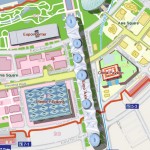
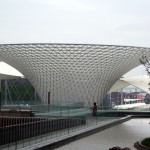
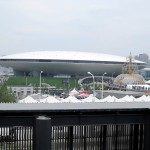
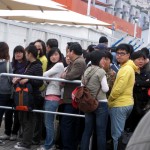
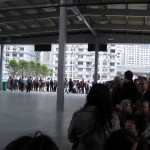
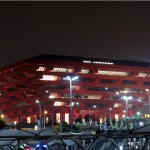
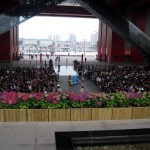
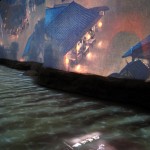
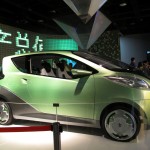
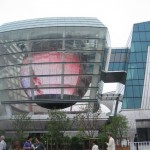
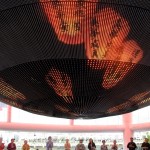
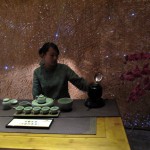
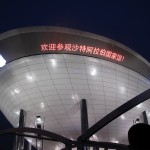

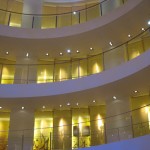

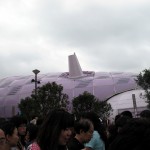
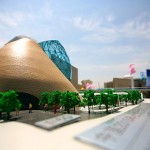
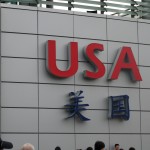
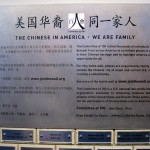
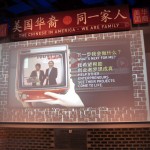


Don,
Very detailed story of your visit at Shanghai EXPO.
I like it very much. I have spent three days there
and had no luck to get in both China and Taiwan Pavilions.
Thanks for the great sharing.
Song
a member of Y@H
Song,
Thanks for your comments.
If we didn’t receive that strategy from Kai Eng before we left for Shanghai, most likely we would have also ended up not getting into the China and Taiwan Pavilions.
Don
great pictures, will have to sit down and read your article one evening. thanks for sharing.
Don,
Thank you very much for spending so much time on sharing your experience so we can all benefit greatly from it. We are going in Oct. after the first busy week, it supposed to be less busy but we can’t be sure. Your article provides many precious information, teaches us a lot of strategies and also mentally prepares us for the big battle we are heading to.
Suzan
Don,
Thank you very much to spend so much time to write this very informative article. I enjoy it very much. I definitely will follow your advice if I decide to visit the Expo.
Kam
Hi Don and Agnes,
Thanks for sharing the EXPO info and great tips. Super details. We are thinking about going there in October also. Are you going to write something on Xinjiang too? Sounds like a great fun to write?
Thanks again.
Shirley
Hi Don,
Greetings to Agnes. I very much appreciated your sharing of your visit to the Expo. There is much information to gain from the information you presented. Too bad it was only two days but you and Agnes sure covered much ground with, I’m sure, little sleep. No chance of me going to China anytime soon to participate in the Expo, but am thankful to hear that some of the key structures will remain even after the Expo is over. The city of Shanghai must be overflowing with people above the norm because of the Expo. It must have been crazy trying to get around the city as well. I’d also love to read about your Xinjiang trip too.
Ruby
Ruby,
Thanks for your comments.
I plan to write an article on reflections of our recent trip to Xinjiang in the next issue of my website, tentatively scheduled for August 2010.
Don
Don,
Thank you so much for writing this superb article with the ample information to share your wonderful experience of the Shanghai World Expo. Its details and tips would surely help those who want to visit the expo in the coming days. I’ve gained much insight by reading the article. Looking forward to the release of the upcoming reflections article on your Xinjiang tour.
Lorinda
Don,
Thanks for sharing your recent visit experiences at the Shanghai’s World Expo – you had pointed out many insights and meaningful things that I enjoyed tremendously. I appreciate your many other articles also.
Peter
Don,
Greeting to Agnes too! Thank you so much for writing such detail Expo experience article with such energy and also provide very useful tips for visiting China and Taiwan pavilions! Both of you seems do not need too much sleep for the trip!
Marjorie
Hi,
Thanks so much for the info and the suggestions to beat the long lines. We are planning to visit the Expo in September. In order not to get disappointed, we are greatly appreciate your 教战守册。
Janet
Thanks for great article – more helpful than all the websites I have looked at so far. I am heading to Shanghai this week for the Shanghai Music Messe which is on from 12th to 15th October and am planning to spend three days at the World Expo before this.
Albert